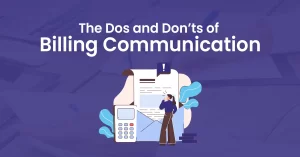Patient engagement is a crucial aspect of healthcare that determines the success of a medical practice.It refers to the active participation of patients in their healthcare and the steps taken by healthcare providers to involve patients in the decision-making process. A successful patient engagement strategy enhances the quality of care,improves patient outcomes, and increases patient satisfaction.The purpose of this checklist is to identify the key elements of a successful patient engagement strategy and provide healthcare providers with a roadmap for implementing an effective engagement program.
Key Elements of a Successful Patient Engagement Strategy
- Clear communication is essential to ensure that patients understand their health conditions, treatment options, and the importance of following their care plan. Healthcare providers should provide patients with clear and concise information, using language that they can understand.Moreover, they should take the time to listen to their patients and address their concerns.
- Patient education is a critical aspect of a successful patient engagement strategy. Healthcare providers should educate patients on their health conditions, the importance of preventive care, and the benefits of following a healthy lifestyle. Patient education should be provided in a variety of formats, including written materials, videos, and face-to-face discussions.
- Empowering patients is a key component of a successful patient engagement strategy. Healthcare providers should encourage patients to take an active role in their healthcare and decision-making process. Patient empowerment can be achieved by involving patients in the development of their care plans, providing them with access to their health information, and encouraging them to ask questions.
- Patient feedback is an essential component of a successful patient engagement strategy. Healthcare providers should solicit feedback from their patients on a regular basis, through surveys, focus groups, and other means.Patient feedback can provide valuable insights into the patient experience,enabling healthcare providers to improve the quality of care and patient satisfaction.
- Patient engagement tools are technology-based solutions that enable patients to access their health information, communicate with healthcare providers, and manage their healthcare. Examples of patient engagement tools include patient portals, telemedicine, and mobile health apps. Patient engagement tools can enhance patient engagement, improve patient outcomes, and increase patient satisfaction.
- Patient-centered care is an approach to healthcare that places the patient at the center of the care delivery process. Patient-centered care involves tailoring care to the individual needs of each patient, taking into account their preferences, values, and cultural background. Healthcare providers who practice patient-centered care are more likely to engage patients and achieve better patient outcomes.
A successful patient engagement strategy requires clear communication, patient education, patient empowerment, patient feedback, patient engagement tools, and patient-centered care. By implementing these key elements of the checklist, healthcare providers can enhance the quality of care, improve patient outcomes, and increase patient satisfaction. Ultimately, a successful patient engagement strategy can lead to better health outcomes and a more sustainable healthcare system.





